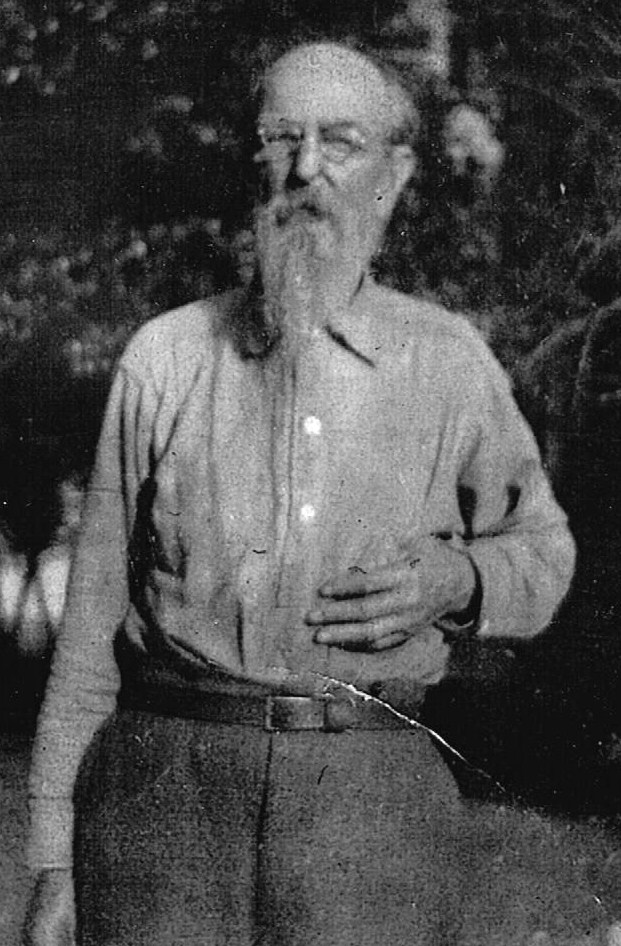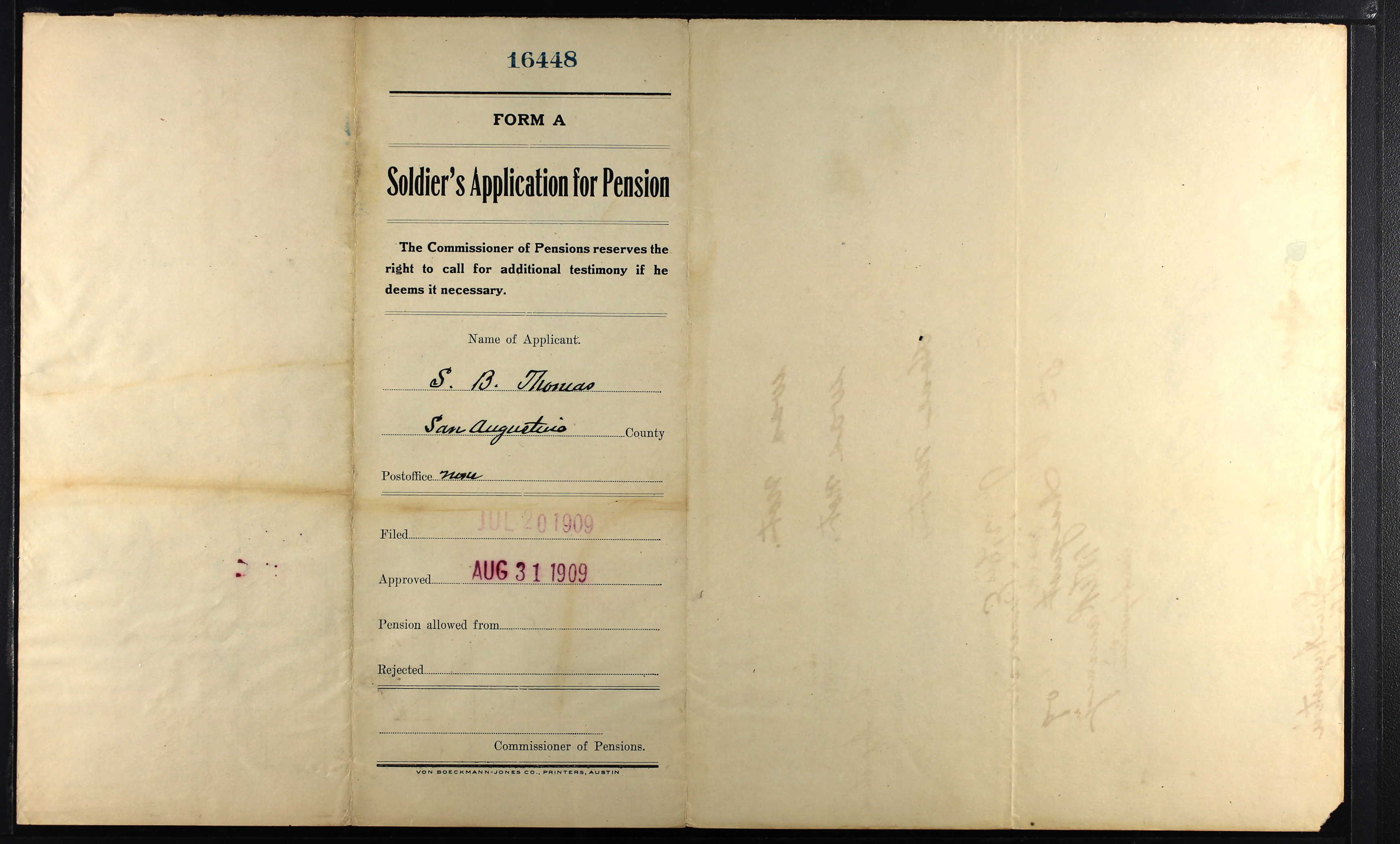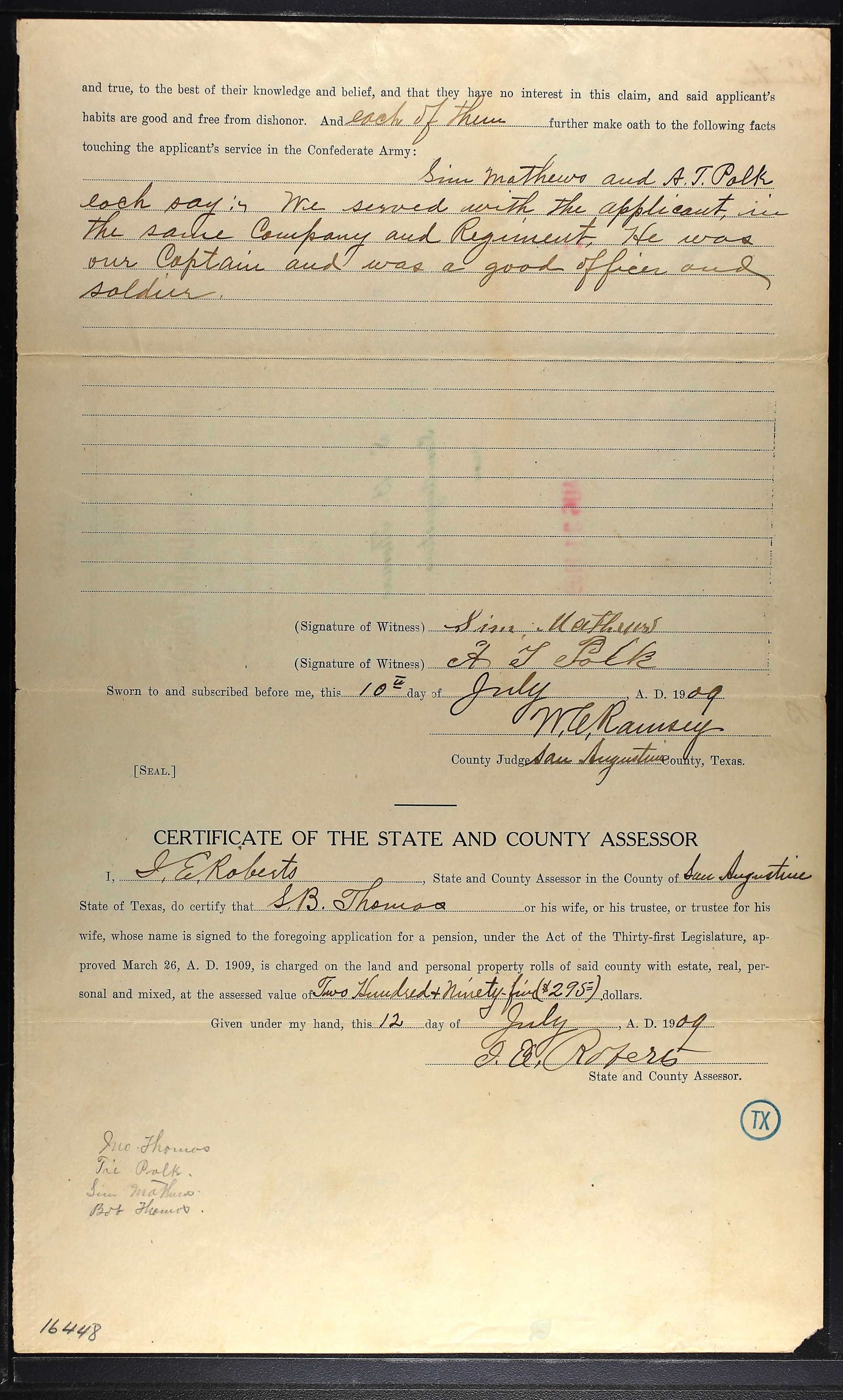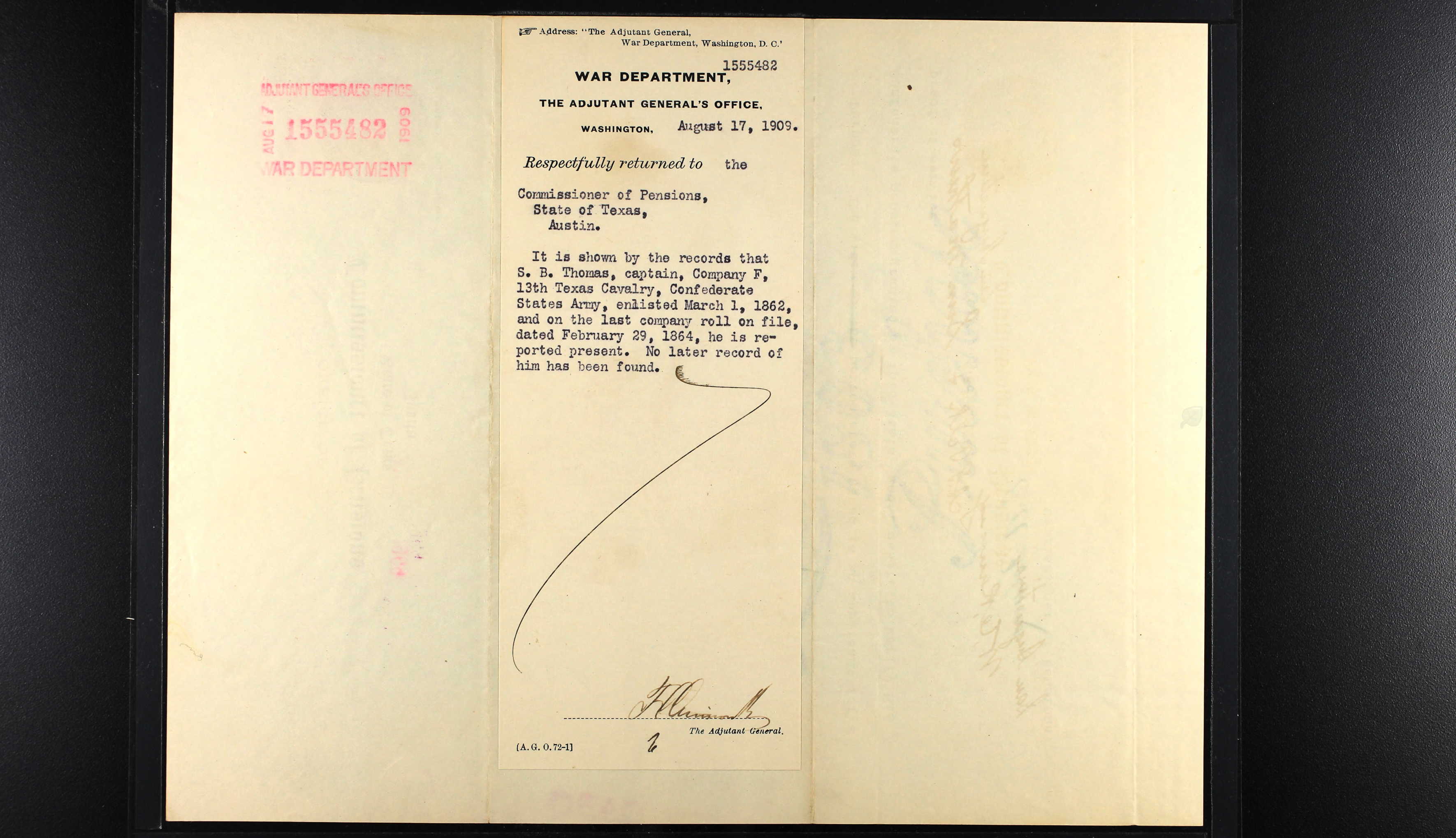
Samuel Brown Thomas
Samuel Brown Thomas
I recently came across the civil war pension application for Samuel Brown Thomas, my paternal great-great-grandfather, while sorting through my genealogy documents. Though we share a first name, he is not my name sake. Most of what I know of Samuel’s life comes from a brief obituary that was submitted in volume 19 of the Confederate Veteran, published in 1911:
Samuel Brown Thomas, whose death occurred recently at his home, near San Augustine, Tex., was a native of Texas. He was born October 7, 1831, under the Mexican Flag in the old homestead near where his remains lie.
His parents, Shadrach and Sarah Thomas, were among the earliest settlers of Texas and this son saw the sovereignty of his native land pass from Mexico to the Republic of Texas to the United States and after four years in the Confederacy back to the United States again, and to every flag while it was his was loyal and true.
Filled with the adventurous spirit of the West, he went to California to try his fortune in the hunt for gold. The outbreak of the Civil War caused his return to Texas, and with his brother John lie enlisted in Capt. Hiram Brown’s company of Angelina County, of which Comrade Thomas was made first lieutenant. Later, when Captain Brown resigned, he was elected captain, and with his men was enrolled in the 13th Texas Cavalry Regiment under Colonel Burnett. Later it was dismounted and known as “dismounted cavalry.” It belonged to Waul’s Brigade of Walker’s Division, and served in Arkansas, Louisiana, and Texas. Throughout the four years Captain Thomas was a gallant soldier and an efficient officer, ever fighting at the head of his company.
When the war closed, Captain Thomas returned home and faced the hardships of ruined fortune with unflinching fortitude. He was married first to Miss Phoebe Sharp, daughter of Dr. B. F. Sharp, but after two happy years the young wife was stricken by death, leaving a little daughter. In 1871 he married Miss Mary Garrett, and removed to Nacogdoches County, where he made his home until a few years since, when he returned with his family to San Augustine County, near the old homestead.
Samuel died at the age of 79 on the 4th of January, 1911. I don’t really know that much about him or his life beyond the pension records and the above biographical obituary. I haven’t been able to locate any information about Samuel’s time in California as a young man (he would have been in his 20’s during his entire time in California), but we can say that he returned to Texas at some point before 1861. Samuel was 30 when he signed up to join the 13th Texas Cavalry Regiment (Confederate) in Crockett, Texas after the outbreak of the war.
As I don’t have any direct sources on Samuel’s time in the 13th, I can only point the reader to other, more general histories that I have found. The definitive history of his unit is chronicled in a book I bought my father several years ago called Spartan Band: Burnett’s 13th Texas Cavalry in the Civil War, written by Thomas Reid. The Texas State Historical Association has an article on the 13th that is comprehensive. You can also read an article on the Red River Campaign, which the 13th participated in, in the New York Times. Samuel would have been 34 when his unit surrendered. 44 years later, he applied for a pension from the state of Texas dependent on his service.
From the application we can learn a little bit about Samuel’s life at 78. He listed his former occupation as being a farmer, and we know that he was not a rich man. All together, his property was valued at $295 - or about $8,570 in 2019. His pension was approved, but he wasn’t completely disabled and so he did not get the full $24 (~ $700) quarterly pension offered. He and his wife Mary made due with an unspecified lesser pension, and, no doubt, help from family. Samuel had only been back in San Augustine for 19 months when he applied for the pension. Previously, he had been living in Nacogdoches County with his wife. Mary would apply for and receive widows benefits after Samuel’s death the next year, and continued to receive them until her death in 1925. We can suppose that she did not receive the maximum of $24 dollars a quarter until 1920, when the pension fund payouts caught up to the originally promised stipend.
I have no documentation as to why Samuel had not applied for the pension earlier, as he was entitled to claim it upon reaching 60 years of age. I thought I might find a clue in a law put into place earlier in 1909, H. B. No. 297, titled CONFEDERATE VETERANS - PROVIDING FOR PERPETUATION OF EVIDENCE TO ESTABLISH IDENTITY. But, upon reading the law, I found nothing to indicate that it changed anything for Samuel; all indications are that he had been entitled to a pension since 1899 but had not claimed it. I can guess that perhaps he had seen a recent change in fortune - if he had had more assets in 1899 or in previous years, he may have either lost them or given them away, and then qualified by 1909 when his net worth went south of $1000 dollars. But this is only conjecture.
Two men who Samuel commanded attested to the pension application: Simeon Mathews and Andrew Tyler Polk, both also of San Augustine, and eventually pensioners themselves.
Below is a copy of the pension application. Samuel filled out the application himself, so his handwriting and signature are throughout.






Many thanks to the Texas State Library & Archives commission and their excellent web tool for searching the index of the state’s pensions, and to the Church of Latter Day Saints for digitizing the pension records. Thanks also to the Google books project, for digitizing the Confederate Veteran. Anthony Mosley uploaded the photo of Samuel Brown in 2010 to ancestry.com, but my uncle Ron also has a copy.
Also of note, Samuel’s unit, the 13th, is indirectly featured in some excellent films. Steven Spielberg’s film Lincoln opens with a depiction of the battle of Jenkins Ferry, a battle the 13th and Samuel participated in. LaBoef, the Texas Ranger in True Grit, was also in the same campaign, and one can guess he was probably in the 13th.